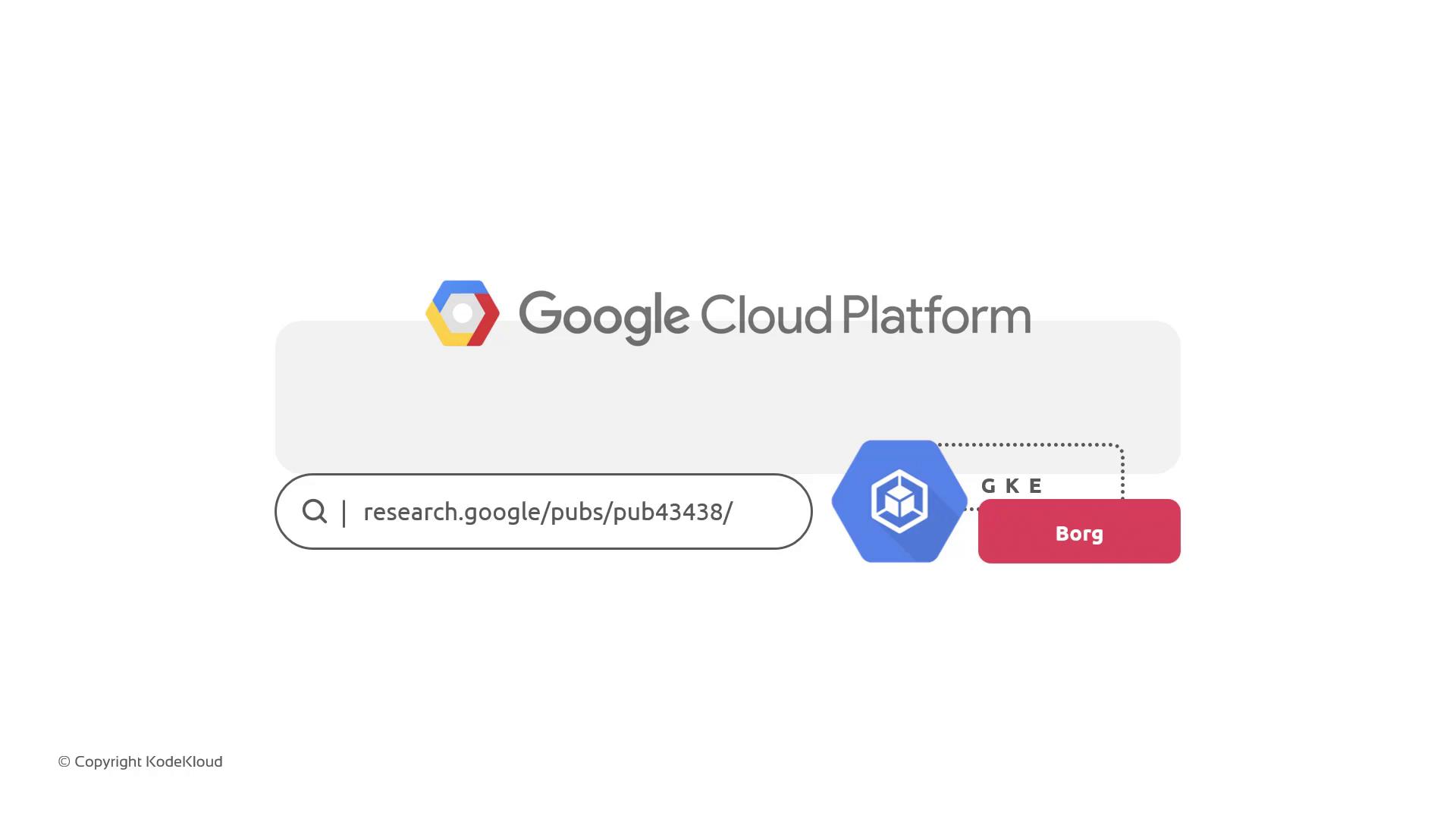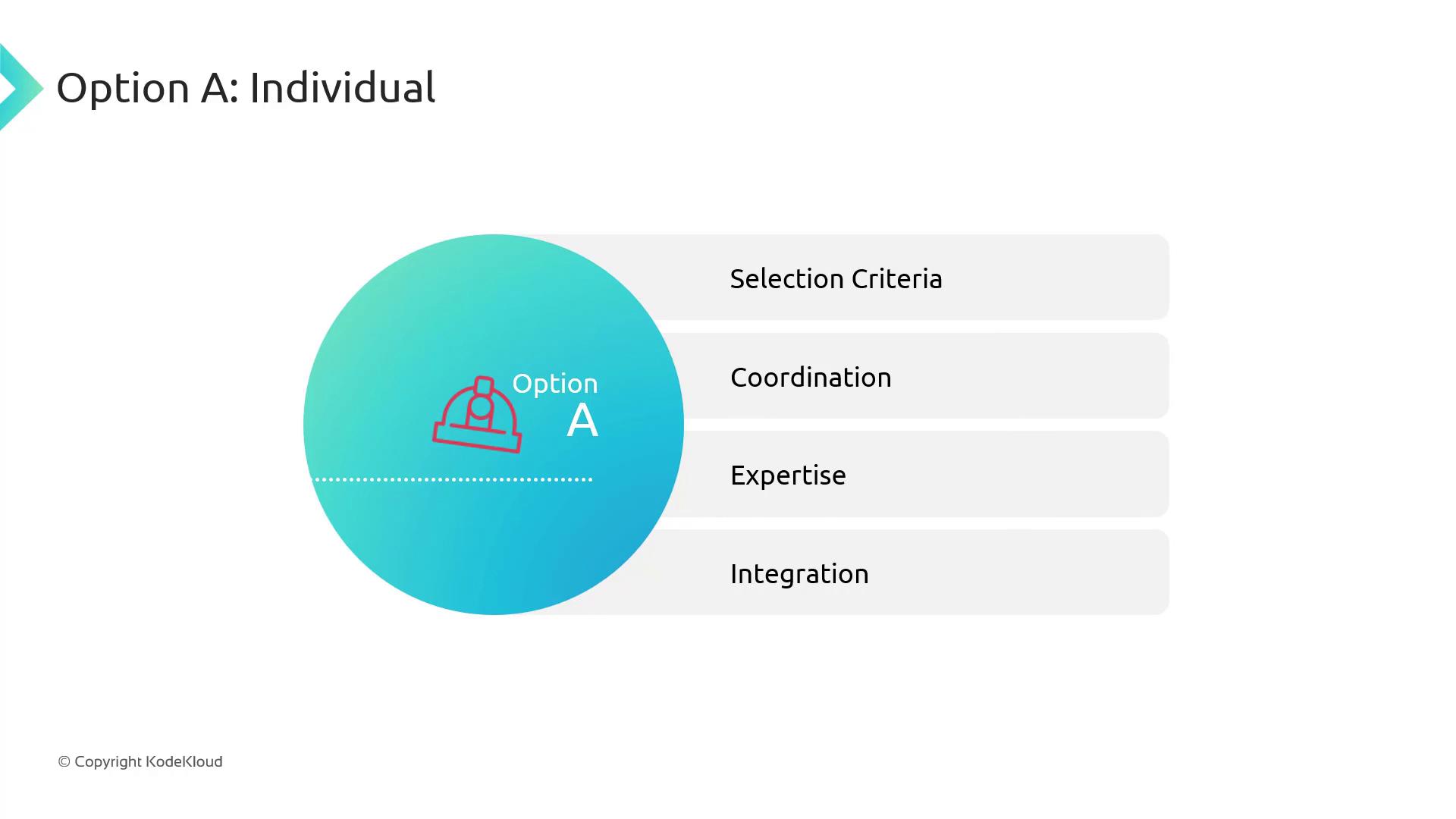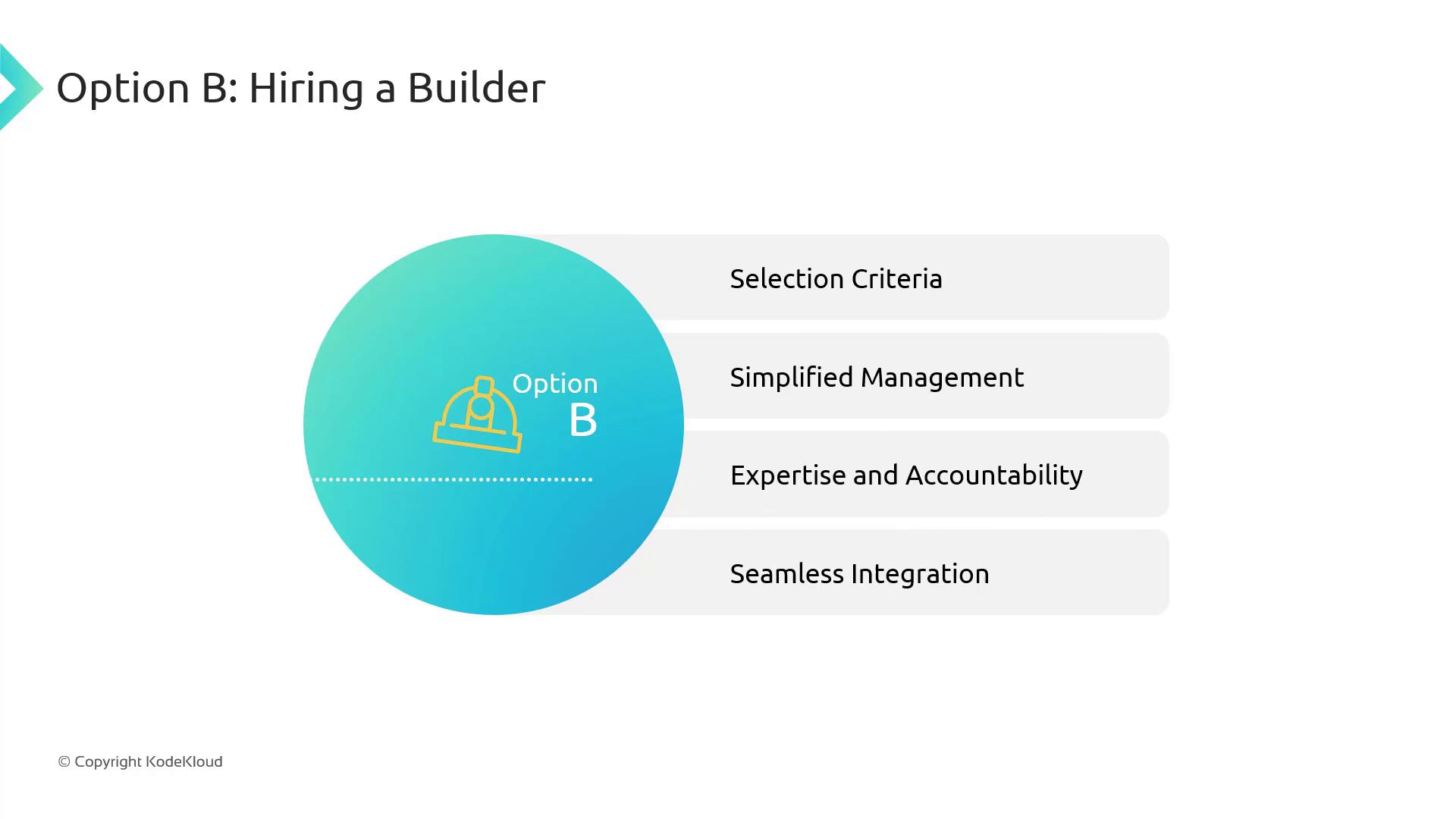GKE - Google Kubernetes Engine
High Level Overview
Google Kubernetes Engine A Google Managed Service
Google Kubernetes Engine (GKE) is Google’s fully managed implementation of the open-source container orchestration platform Kubernetes. It enables you to deploy, scale, and operate containerized applications on Google’s infrastructure, leveraging features that originated from Google’s internal cluster manager, Borg. For deeper insights into Borg, see Google’s Borg research publication.

The House-Building Analogy
To illustrate how GKE compares to managing Kubernetes yourself, picture building a house. You have two approaches:
- Option A: Hire Individual Trades
- Option B: Hire a Builder
![]()
Option A: Manage Each Trade Yourself
Taking on each specialty—carpenters, electricians, plumbers—means you must:
- Select qualified trades and materials
- Coordinate schedules and handoffs
- Verify certifications and expertise
- Integrate all parts into a single, livable home

Managing each piece separately often becomes overwhelming and error-prone.
Option B: Hire a Builder
A builder handles everything—sourcing, scheduling, quality control—so you only need to oversee the project outcome:
- Centralized selection and procurement
- Single point of contact for updates
- Accountability for trades and results
- Seamless assembly of all components

Kubernetes vs. GKE
Working with upstream Kubernetes is like Option A: you provision the control plane, configure etcd, manage upgrades, scale nodes, and maintain high availability. GKE, on the other hand, is your dedicated builder:

With GKE, Google handles:
- Control plane provisioning, upgrades, and patching
- Node auto-provisioning, autoscaling, and auto-repair
- Regional clusters with built-in high availability
- Security hardening (e.g., Shielded GKE Nodes)
- Native integration with Cloud Monitoring, Load Balancing, IAM, and more
This lets you focus on your workloads while GKE manages the infrastructure.
When to Use GKE
Built on a decade of Borg experience, GKE delivers production-ready defaults and managed services for your applications:

| Use Case | Benefit |
|---|---|
| Production-Hardened Plane | Google maintains your control plane with version upgrades, security patches, and an SLA-backed uptime guarantee. |
| Node Management | Automatic provisioning, scaling, and self-healing for worker nodes. |
| Reliability & Expertise | Regional clusters and Google’s global network offer high availability and low latency worldwide. |
| Service Integration | Deep connectivity with Artifact Registry, Cloud Monitoring & Logging, VPC, and IAM. |
Note
GKE supports Container-Optimized OS (COS), Ubuntu, and Bottlerocket node images for enhanced security and performance.
Key GKE Features & Benefits
GKE enhances open-source Kubernetes with managed services that accelerate development and simplify operations:
![]()
| Feature | Description |
|---|---|
| Fully Managed Clusters | Google manages control plane, nodes, networking, storage, and upgrades |
| Autoscaling | Cluster and Horizontal Pod Autoscaling automatically adjust resources to meet demand |
| Load Balancing | Built-in HTTP(S), TCP/SSL, and internal load balancing for high availability |
| Observability | Integrated Cloud Monitoring, Logging, Debugger, and Trace for real-time insights |
| Ecosystem Integration | Seamless connectivity to Cloud SQL, Cloud Storage, BigQuery, and the full Google Cloud portfolio |
GKE is the ideal choice when you want the power of Kubernetes without the overhead of managing control planes, node lifecycles, and production-grade integrations.
Links and References
- Kubernetes Basics
- Google Kubernetes Engine Documentation
- Terraform Registry: Google Provider
- Google Cloud Platform
Watch Video
Watch video content